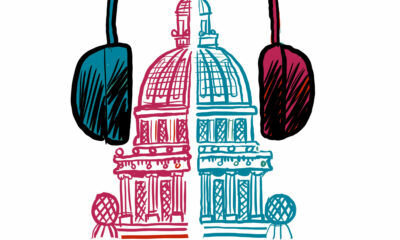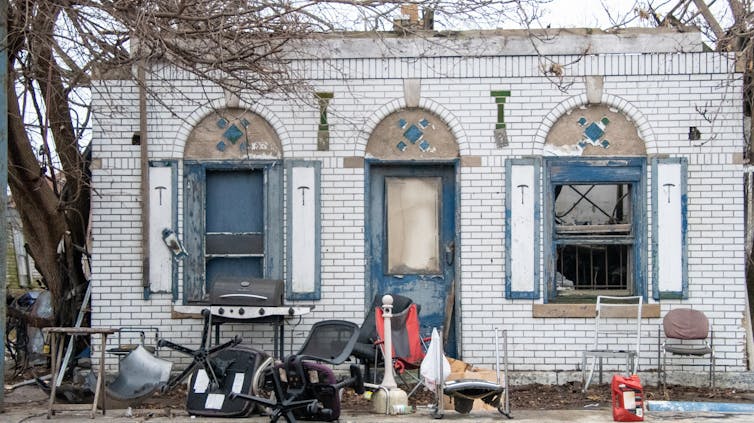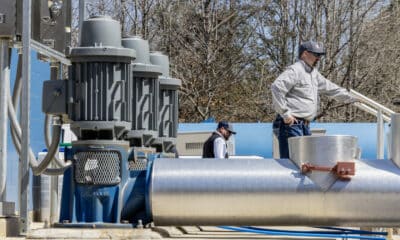Art Durnev, University of Richmond
Ever since Donald Trump returned to the White House in January, stock market expectations have been volatile – driven in part by a healthy dose of motivated reasoning.
At first, markets surged on hopes of lower taxes and deregulation. But this enthusiasm soon faded as announcements about tariffs and stricter immigration policies dampened sentiment. Underscoring that point, on March 3, the Dow Jones Industrial Average fell more than 600 points after Trump said that tariffs he had been threatening for weeks would indeed be imposed on Canada and Mexico the following day.
In all of these cases, investors weren’t just reacting to economic fundamentals. They were projecting their own assumptions onto them, helping shape market reality.
Financial forecasting is notoriously tricky, and it’s not easy to separate meaningful data from mere “noise.” But it’s still worth asking: Are American investors ready for a new period of economic and financial turbulence? Will Trump fuel another Wall Street rally? Or will uncertainty drag markets down?
As an economics expert with two decades of experience studying politics and finance, I believe that presidential rhetoric and policies can create uncertainty – and that uncertainty affects the market. Specifically, stock prices tend to rise when companies expect higher profitability and fall when uncertainty outweighs the gains.
Trump’s dramatic policy shifts are already sending mixed signals to the markets. And what happens in the next four years could reshape America’s financial future. Today, more than 60% of Americans are tied to the stock market through retirement and investment accounts, which means the repercussions will go far beyond Wall Street.
How do presidents affect the stock market?
Presidential elections have a well-documented impact on financial markets.
Stocks tend to rally in the weeks leading up to the vote, but risk jumps by about 15% as investors brace for uncertainty. This uncertainty hits some companies harder than others, especially those in politically sensitive industries. Businesses that spend big on lobbying and companies affected by trade or climate policies suffer the most.
Many analysts, particularly those in business or finance, may assume that stock markets would do better under Republican administrations, as their purportedly pro-business, market-friendly policies are bound to improve returns. But history suggests otherwise: Over the past 70 years, markets have delivered 9% higher returns under Democratic than Republican presidencies.
Does that mean Democrats are better at managing the economy? Not necessarily. Research suggests that timing is key. Democrats tend to take office during economic downturns, inheriting markets that are primed for recovery – essentially, to use the parlance of markets, they “buy low.” Following the 2008 financial crisis, for instance, the stock market saw significant gains as the economy gradually recovered under the Obama administration.
Republicans, on the other hand, often inherit strong economies with limited upside, as they tend to assume office during periods of economic growth. This leaves less room for gains, especially when the market is already stable.
Trump, uncertainty and the markets
Markets love stability and predictability. Yet when political shifts introduce volatility, investor confidence – and ultimately stock valuations – can be shaken. Fewer privately held businesses are willing to go public during election years, for example. This suggests that political uncertainty constrains business decisions. Companies that rely heavily on government contracts and international trade are especially susceptible to this effect.
Trump’s policies have already created significant uncertainty, which directly impacts market stability and performance. The recent announcements of tariffs on goods from Canada, Mexico and China led to big market swings, particularly in industries reliant on global supply chains such as tech and manufacturing. Trump temporarily postponed the new tariffs on Mexico and Canada, but the new tariffs on China went into effect as planned – an inconsistency that itself worsened uncertainty. If Trump continues down this path, U.S. companies relying on international trade will be faced with greater uncertainty in an already volatile market.
Immigration is another area in which Trump’s policies could cause uncertainty. Any moves that target illegal immigration or limit foreign workers are likely to hurt industries such as agriculture and tech that rely heavily on workers from abroad. Though some sectors may see benefits from reduced competition, the overall impact on the economy could be to increase market unpredictability.
Besides the president’s policy agenda, another big factor influencing the stock market is the unpredictability of Trump’s statements and actions. A single social media post can send shock waves through industries such as tech, pharma and defense. Similarly, unexpected shifts in policy can lead to rapid stock price declines.
With the beginning of the second Trump term, many Americans – especially those nearing retirement age – are watching closely as the president’s policy agenda takes shape. What it all means for their lives, and how it will affect investments, market stability and broader economic trends, is an open question.
But for investors weighing risk and reward, understanding the interplay between uncertainty, economic policy and market dynamics is essential. A second Trump term has the potential for significant shifts – not just for Wall Street but for the economy as a whole.![]()
Art Durnev, Distinguished Chair in Finance, Professor of Finance, University of Richmond
This article is republished from The Conversation under a Creative Commons license. Read the original article.
















































